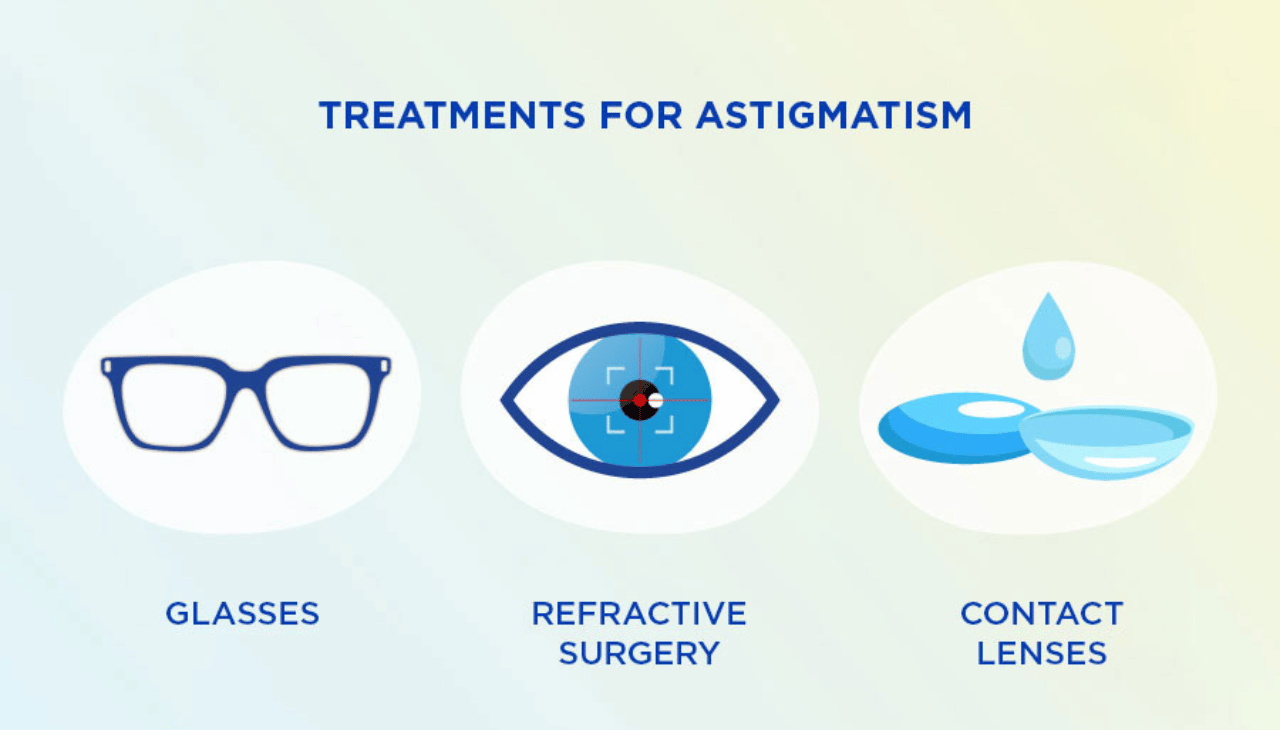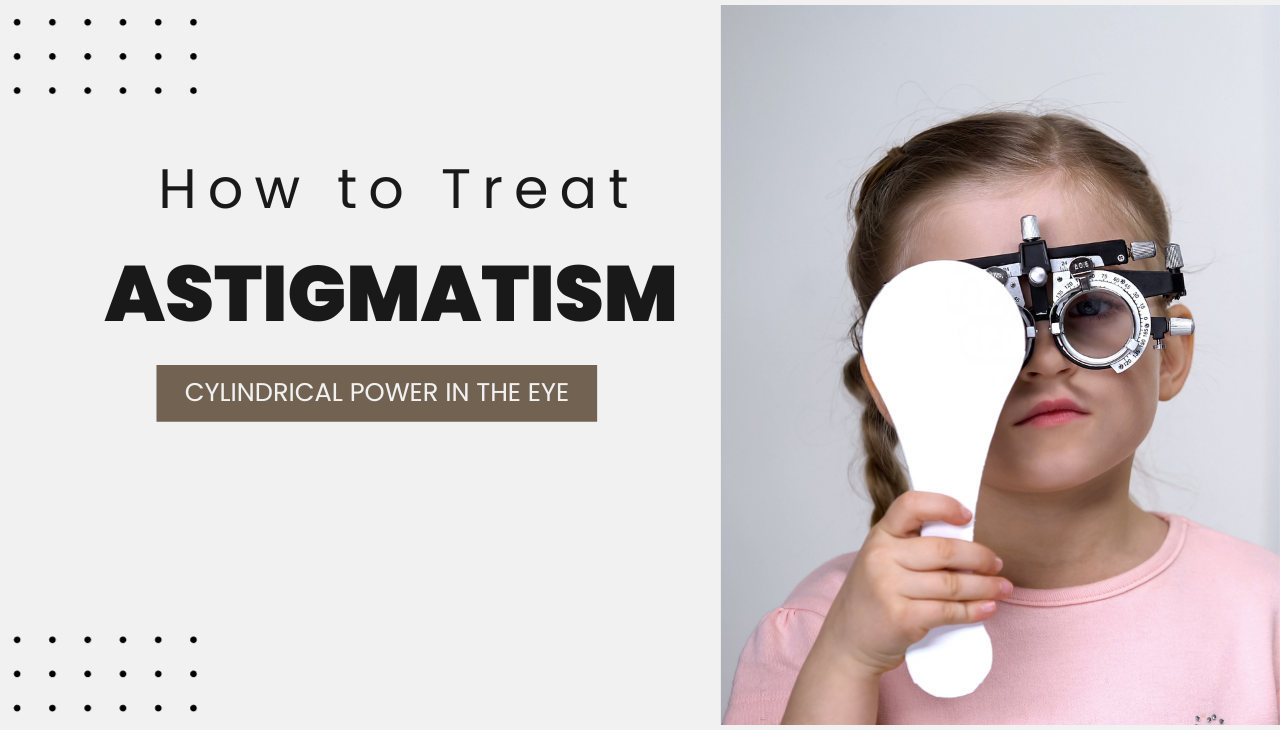Introduction
Eyesight is a precious sense. One common vision problem that many people experience is astigmatism. It can cause blurriness, distorted vision, and discomfort, but the good news is that it is highly treatable. Now, we will make you understand what astigmatism is, its causes, and various treatment options available to correct this cylindrical power in the eye.
Understanding Astigmatism
It is an optical condition that occurs when the cornea or lens of your eye has an abnormal or irregular shape. In a normal eye, both of them are smooth and evenly curved, allowing light to focus on a single point on the retina, producing clear vision. However, in people with astigmatism, the cornea or lens is irregularly shaped, causing light to focus on multiple points in the eye, leading to distorted and blurred vision.

Astigmatism is commonly classified into two categories:
- Corneal Astigmatism: This is the most prevalent form and occurs when the shape of the cornea is irregular.
- Lenticular Astigmatism: This type is caused by irregularities in the lens of the eye.
Symptoms of Astigmatism
It can manifest with various symptoms, including:
- Blurred or distorted vision
- Eye strain and fatigue
- Headaches
- Difficulty with night vision
- Squinting
Causes of Astigmatism
It can be present from birth and is often hereditary. However, it can also develop later in life due to various factors, including:
- Changes in the eye’s shape
- Eye injuries
- Certain eye conditions, such as keratoconus.
- Some types of eye surgeries can lead to astigmatism as a side effect.
Treatment Options for Astigmatism
The good news is that astigmatism is highly treatable. Several treatment options are available to correct the cylindrical power in the eye and provide clear, focused vision. The choice of treatment will depend on the severity of the astigmatism and individual preferences. Here are the primary treatment options:

- Eyeglasses are a simple and effective way to correct astigmatism.
- Contact lenses are another popular option for It’s correction.
- Refractive surgery, such as Laser-Assisted In Situ Keratomileusis or LASIK and Photorefractive Keratectomy or PRK, is a more permanent solution for astigmatism. These procedures help to reshape the cornea to correct the refractive error.
- Ortho-K is a non-surgical, reversible method to correct astigmatism and other refractive errors. It involves wearing specially designed contact lenses overnight, which temporarily reshape the cornea to provide clear vision during the day.
- In some cases, astigmatism-related eye strain can be alleviated through relaxation techniques and regular eye exercises.
Conclusion
It is a common optical problem that can cause blurred and distorted vision. But there are several effective treatment options available to correct the cylindrical power in the eye. With the right treatment, you can enjoy clear and comfortable vision, enhancing your overall quality of life. Remember, regular eye exams are key to detecting astigmatism early and ensuring that your vision is well-corrected.
Consulting the skilled and experienced doctors at Laxmi Eye Hospital for treating astigmatism is a wise and promising decision. Whether you’re seeking corrective surgeries like LASIK or PRK, or exploring non-surgical options such as specialty contact lenses, their dedicated team will provide personalized care tailored to your specific needs.
At Laxmi Eye Hospital, your vision health is their top priority, and they are committed to helping you achieve clear, comfortable vision. Don’t let it hinder your quality of life; schedule a consultation today and take the first step towards a brighter, clearer future for your eyes.


